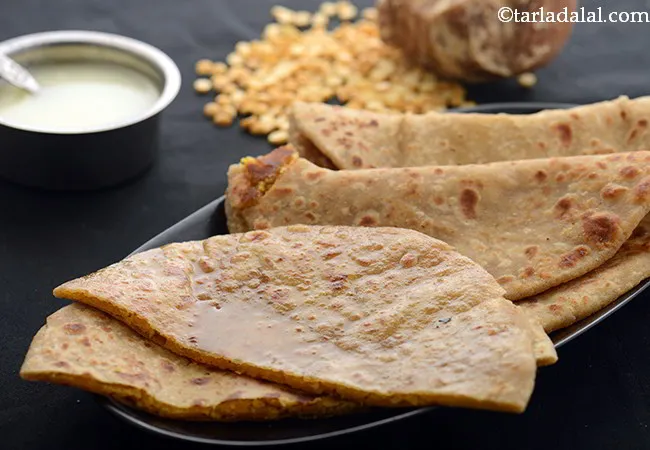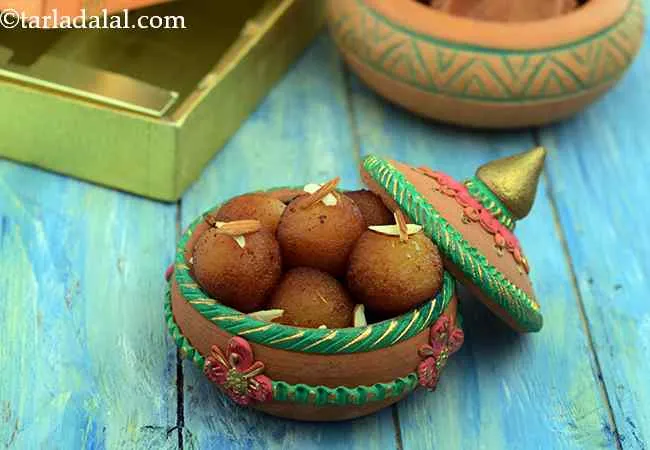This category has been viewed 130881 times
Occasion & Party > Occasion > Gudi Padwa
41 Gudi Padwa Recipes
Last Updated : 11 November, 2024

What to Cook on Gudi Padwa Day
The month of Chaitra, which starts in April, is considered holy by Indians all over the world, and each community celebrates it in some way or the other. For most Hindu communities, it marks the beginning of the lunar year. It is celebrated as Ugadi, Vishu, Varusha Pirappu, Baisakhi, Gudi Padwa, etc.
What is Gudi Padwa?
Gudi Padwa, or Chaithra Shukla Pratipada, is a Maharashtrian festival that is celebrated on the first day of the Chaitra month of the Hindu calendar. Being the first day of a new lunar year, it is traditionally celebrated as Hindu New Year. It is believed that the universe was created by Lord Brahma on this day.
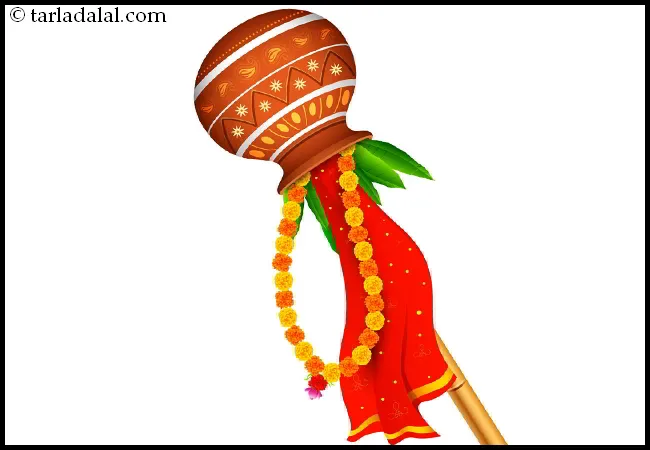 Happy Gudi Padwa!!!!
Happy Gudi Padwa!!!!
Chaitra Navratri is also known as ‘Vasanta Navratri’ or ‘Rama Navratri’ as the ninth day of the Navratri festivity is celebrated as the birthday of Lord Rama. People belonging to the Kutchi Gujarati community also celebrate this auspicious day as new year.
How do Maharashtrians celebrate Gudi Padwa?
Gudi Padwa is a day that combines worship with celebration. Right from when the family wakes up, each member is busy with some joyful task or the other. The day is packed with interesting activities like decorating the house with colourful rangolis, making of bamboo dolls, conducting pujas, cooking and tasting food with a mix of flavours, and many more such activities.
Here is how the day goes by…
• All the family members get up early in the morning, clean their homes and take a good clean bath (abhyangasnan bath). Now comes the fun part – they wear new clothes!
• The front yard and/or the area outside the main door are decorated with colour rangolis or flower rangolis. A string of mango leaves and flowers, known as Toran, is fixed on the main door.
• The idols kept in the pooja ghar are given a holy bath with chandan or fragrant utana. This is followed by puja and arati. As part of the puja, lamps and incense sticks or cones are lit as signs of auspiciousness. Neeranjan is offered and the family prays together to the deity for everyone’s well-being.
• Kids worship their school books, as Saraswati Devi, the Goddess of Knowledge manifests in the form of books and other tools of learning.
• Another interesting custom is to make Gudi or dolls out of bamboo sticks. A copper, brass or silver pot (new or properly cleaned one) is used to make the face of the gudi. The doll is decked with new silk cloth, neem and mango leaves and coloured garlands. Sweet batasha garland is offered and tied on the doll. This beautiful gudi is then placed or hoisted outside the main door or a window near the main home entrance. Diyas or incense sticks are lighted in front of the gudi and worshipped.
• It is believed that on this day Lord Ram returned to Ayodhya and people welcomed him by hoisting pretty gudis in front of their houses. So, the custom continues.
• Everybody touches the feet of their elders and gurus and seeks their blessings. Friends and relatives wish each other a Happy New Year.
• This day is one amongst the 3½ muhurats considered to be extremely auspicious for starting new things or doing good deeds or charity. You can start doing new things (example, start music classes), inaugurate a business or shop, construct a new house, purchase gold ornaments or new vehicles, etc., on this day.
• Food being part and parcel of all festivities, it plays an important role here too. The family sits together and enjoys a traditional meal along with one or more Indian sweets. Shrikhand, or sweetened and flavoured hung curds, is a must for this occasion. It can be made at home or bought, because a lot of variety is available in stores these days.
• It is also customary that every family member consumes at least a little bit of neem juice on this day. The philosophical reason is that all sweetness in life is punctuated by a little bitterness – there are ups and downs in life and we should face it with fortitude. Every bad experience also ultimately leads to some learning and makes us a better person, just like the bitter taste of neem juice leaves a sweet aftertaste on your palate!
• Neem juice also helps improve your resistance and helps fight infections that inevitably come when the weather changes. It starts getting warmer after Gudi Padwa and having some neem juice will stand you in good stead!
Recipes you can make for Gudi Padwa
Your Gudi Padwa feast can comprise one or more of the following dishes, along with the traditional main course dishes you normally have for any traditional meal. Shrikhand is a must for this festival, and it can be made at home or bought from the market. You can have a fruity Shrikhand like Mango Shrikhand or a spice-soaked one like the Kesar Elaichi Shrikhand. Diabetics can also have something healthier like the Mixed Fruit Shrikhand, so that they do not feel left out!
Mango Shrikhand, Aamrakhand
Puri is just the right combo for Shrikhand, so go for plain puris or something more flavourful like the Masala Puri or Phudina Puri.
Maharashtrians love Puran Poli, and so it is apt to make it for Gudi Padwa too!
Puran Poli, Maharashtrian Puran Poli Recipe
But, you can also add more sweets to the spread like Gulab Jamun and Basundi, or something richer like the Anjeer Basundi. Rice Kheer or Seviyaan Kheer is always a welcome addition, and so is a Bengali sweet like Rasmalai.
A heavy meal like this is sure to put you in a satisfied trance for a while, so after a short afternoon nap and a cup of chaai, you will be ready to exchange greetings with neighbours, and host or visit friends and relatives in the evening.
You can even invite some of your close relatives or friends in the evening to celebrate and have dinner together.
Rasmalai Recipe
The start of a year is always a good time to make positive changes in your life, and after so many cheerful activities, it is nice and wise to spend some time contemplating about the year gone by and what you expect to do in the coming year.
And so each year rolls by, with life getting better and better…

puran poli recipe | Gujarati puran poli | authentic puran poli | vedmi | with amazing 29 images.Puran … More..
Recipe# 1827
06 January, 2020
calories per serving
basundi recipe | Gujarati basundi | how to make traditional basundi sweet | milk basundi recipe | with … More..
Recipe# 1824
03 March, 2024
calories per serving
Maharashtrian masala bhaat recipe | healthy masala brown rice | healthy masala vegetable pulao | with 26 amazing … More..
Recipe# 3301
27 February, 2020
calories per serving
poori | puri | plain puri | whole wheat puri | soft poori | with 14 amazing imagespoori … More..
Recipe# 3568
11 September, 2019
calories per serving
til chikki recipe | til gur ki chikki | 3 ingredient til ki chikki | how to make … More..
Recipe# 2975
18 November, 2020
calories per serving
masala puri | masala poori | Gujarati masala puri | Maharashtrian Tikkat puri | with 16 amazing images.masala … More..
Recipe# 1819
09 December, 2025
calories per serving
Maharashtrian puran poli recipe | puran poli | Maharashtrian sweet dish | with 30 amazing images.Maharashtrian puran poli … More..
Recipe# 5674
15 January, 2020
calories per serving
pista barfi recipe | Indian style pistachio fudge | pista barfi using milk powder | 4 ingredients pistachio … More..
Recipe# 197
14 March, 2024
calories per serving
kaju katli recipe | kaju barfi | kaju burfi | homemade kaju katli diwali special | Indian style … More..
Recipe# 6148
13 November, 2020
calories per serving
moong dal sheera recipe | moong dal ka halwa | Gujarati Moong dal no shiro | with 30 … More..
Recipe# 179
11 February, 2024
calories per serving
calories per serving
puran poli recipe | Gujarati puran poli | authentic puran poli | vedmi | with amazing 29 images.Puran … More..
calories per serving
basundi recipe | Gujarati basundi | how to make traditional basundi sweet | milk basundi recipe | with … More..
calories per serving
Maharashtrian masala bhaat recipe | healthy masala brown rice | healthy masala vegetable pulao | with 26 amazing … More..
calories per serving
poori | puri | plain puri | whole wheat puri | soft poori | with 14 amazing imagespoori … More..
calories per serving
til chikki recipe | til gur ki chikki | 3 ingredient til ki chikki | how to make … More..
calories per serving
masala puri | masala poori | Gujarati masala puri | Maharashtrian Tikkat puri | with 16 amazing images.masala … More..
calories per serving
Maharashtrian puran poli recipe | puran poli | Maharashtrian sweet dish | with 30 amazing images.Maharashtrian puran poli … More..
calories per serving
pista barfi recipe | Indian style pistachio fudge | pista barfi using milk powder | 4 ingredients pistachio … More..
calories per serving
kaju katli recipe | kaju barfi | kaju burfi | homemade kaju katli diwali special | Indian style … More..
calories per serving
moong dal sheera recipe | moong dal ka halwa | Gujarati Moong dal no shiro | with 30 … More..

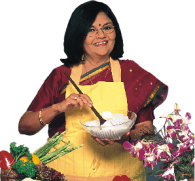
Related Recipes
Follow US
Recipe Categories
- Vitamin B12 Cobalamin Rich Recipes 33 recipes
- Low Calorie, Weight Loss Indian Recipes 421 recipes
- Low Cholesterol Indian Recipes 308 recipes
- Healthy Indian Breakfast 373 recipes
- Indian Diabetic recipes 559 recipes
- Indian Pregnancy recipes 461 recipes
- Zero Oil Indian Recipes 133 recipes
- Iron Rich Indian recipes 268 recipes
- Healthy Indian Acidity recipes 137 recipes
- Healthy Sabzis 108 recipes
- Indian Healthy Veg Snack 276 recipes
- Healthy Heart Recipes 415 recipes
- Healthy Veg Indian Soups 74 recipes
- Calcium Rich Indian Recipes 373 recipes
- High Blood Pressure Indian Recipes 103 recipes
- Healthy Indian Salads Recipes 137 recipes
- Low Carb Indian Diet, recipes 163 recipes
- Hypothyroidism Diet 63 recipes
- Arthritis Diet 68 recipes
- High Protein Indian recipes 95 recipes
- Vitamin K Diet 42 recipes
- Fatty Liver Diet 39 recipes
- PCOS 136 recipes
- Gluten Free Veg Indian 196 recipes
- High Fiber 328 recipes
- Indian Cancer Patients 275 recipes
- Jaundice Diet 45 recipes
- Sprouts 61 recipes
- Typhoid 43 recipes
- Irritable Bowel Syndrome (IBS) 23 recipes
- Kidney Stone Diet 10 recipes
- Home Remedies 213 recipes
- Senior Citizen 195 recipes
- Healthy Indian Drinks and Juices 213 recipes
- Diet for Dialysis 10 recipes
- Gout Indian Recipes 17 recipes
- Potassium Rich 80 recipes
- Vegan 195 recipes
- Indian recipes to treat Vomiting 8 recipes
- Forever Young Diet, Anti Aging Indian Diet 255 recipes
- Antioxidant Rich Indian 445 recipes
- Vitamin B1 Rich Indian Foods, Recipes 101 recipes
- High in Omega 3 Fatty Acids 32 recipes
- Zinc Rich Foods 55 recipes
- Vitamin A Rich, Beta Carotene, Retinol 89 recipes
- Malaria Diet 19 recipes
- Magnesium Rich 94 recipes
- Healthy Indian Dinner 85 recipes
- Vitamin C Rich Indian recipes 118 recipes
- Low Veg Glycemic Index 86 recipes
- Lower Blood Pressure Salads 8 recipes
- Healthy Indian Lunch Recipes 29 recipes
- Lactation 25 recipes
- Vitamin E Rich 51 recipes
- Hyperthyroidism Diet 47 recipes
- Vitamin B3, Niacin Rich 41 recipes
- Post Surgery Diet 42 recipes
- Selenium 27 recipes
- Phosphorus Rich Indian Recipes, Foods 74 recipes
- Lower Blood Pressure Desserts Sweets 14 recipes
- Copper 15 recipes
- Foods Rich in Vitamin B2 Riboflavin 22 recipes
- Vitamin B6 Diet 36 recipes
- B Vitamins 231 recipes
- Vitamin B9 Rich Folate 50 recipes
- Marathoners, Endurance Athletes, Triathlete 225 recipes
- Manganese Diet 32 recipes
- Thalassemia 18 recipes
- Detox Water, Fruit Infused Water 42 recipes
- Lactose Free Dairy Free 22 recipes
- Omega 6 Fatty Acids 32 recipes
- Phytonutrients 51 recipes
- Chronic Kidney Disease Indian recipes 12 recipes
- Selenium1 0 recipes
- Quick Snacks / Quick Starters 385 recipes
- Quick Breakfast Indian 131 recipes
- Quick Sabzis 117 recipes
- Quick Rotis / Parathas 46 recipes
- Quick Indian Sweets 139 recipes
- Quick Stir-Fries 51 recipes
- Quick Vegetarian Indian Soups 72 recipes
- Quick Chutneys 67 recipes
- Quick Vegetarian Rice, khichdi Recipes 56 recipes
- Indian snacks under 10 minutes 44 recipes
- Quick Indian Dips, Gravies & Sauces 105 recipes
- Quick Veg Indian Pizza 17 recipes
- Quick Veg Pasta 25 recipes
- Quick Pickles / Aachar 25 recipes
- Quick Dals / quick Kadhis 29 recipes
- Snacks under 5 minutes 33 recipes
- Quick Healthy Recipes 43 recipes
- Quick Pressure Cooker 46 recipes
- Quick Desserts 47 recipes
- Quick 3 Ingredients 63 recipes
- Quick Indian Desserts 20 recipes
- Quick 4 Ingredients 41 recipes
- Quick 5 Ingredients 42 recipes
- Kids Tiffin Box 319 recipes
- Recipes for Toddlers (1-3 Years) 32 recipes
- Sweet Recipes for Kids 456 recipes
- Recipes for Baby (10 to 12 Months) 17 recipes
- Quick Indian recipes for Kids 72 recipes
- Indian Breakfast Recipes for Kids 192 recipes
- Recipes for Weaning (8 to 9 months) 22 recipes
- Healthy Foods for Kids 196 recipes
- Snack Recipes for Kids 619 recipes
- Recipes Kids can make 36 recipes
- Kids After School 794 recipes
- Kids Jar Snacks 66 recipes
- Finger Foods for Babies, Toddlers and Kids 76 recipes
- Kids Weight Gain 43 recipes
- Kids Wraps and Rolls 23 recipes
- Kids Veg Pasta 27 recipes
- Kids Brain Boosting 68 recipes
- Protein rich food for kids 71 recipes
- Recipes for Weaning 15 recipes
- Kids Pizzas 30 recipes
- Babies, Toddler and Kids Iron Rich Foods 31 recipes
- High Fiber Foods for Kids 39 recipes
- Kids High Energy Indian Foods 103 recipes
- Kids Noodles 37 recipes
- Kids Calcium Rich Indian recipes 92 recipes
- Babies recipes, 6 to 18 months 34 recipes
- Kids Recipes for Increasing Immunity 10 recipes
- Kids Weight Loss 58 recipes
- Teething Recipes for Babies 10 recipes
- Cereals and Pulses for 8 to 9 months Baby 8 recipes
- Weaning foods at 7 months 12 recipes
- Indian Teen 315 recipes
- Starters / Snacks 2138 recipes
- Indian Breakfast Recipes 819 recipes
- Main Course Recipes 925 recipes
- Indian Salads 385 recipes
- Indian Desserts , Sweets 985 recipes
- Indian Soups 249 recipes
- Indian Beverages, Indian Drinks 483 recipes
- Indian Dinner 903 recipes
- Indian Dinner1 0 recipes
- Indian Lunch 829 recipes
- Side Dishes 449 recipes
- Indian Travel Food 433 recipes
- Indian Barbeque1 recipes 22 recipes
- Frozen Foods, Indian Freezer Recipes 67 recipes
- Whole Wheat Recipes 56 recipes
- Indian Comfort Foods 212 recipes
- Dinner Menus 56 recipes
- Easy Indian Veg 70 recipes
- Innovative Indian Recipes 27 recipes
- No Cook Indian 37 recipes
- Advanced Recipes 10 recipes
- Cakes with Eggs 13 recipes
- Microwave 229 recipes
- Oven 619 recipes
- Indian Steamer Recipes 102 recipes
- Kadai Veg 407 recipes
- Indian Barbeque Recipes 43 recipes
- Sizzler tray 15 recipes
- Mixer 566 recipes
- Pressure Cooker 315 recipes
- Tava 647 recipes
- Non-stick Pan 1393 recipes
- Indian Freezer recipes, meals 57 recipes
- Appe Mould 18 recipes
- Pan 223 recipes
- Non Stick Kadai Veg 203 recipes
- kadai Indian 150 recipes
- Refrigerator 176 recipes
- Waffle Indian recipes 6 recipes
- Handi 12 recipes
- Juicer and Hopper 65 recipes
- Grill 31 recipes
- Toaster 21 recipes
- Gas Toaster 8 recipes
- Steam 72 recipes
- No Cooking Veg Indian 335 recipes
- Vegetarian baked Indian recipes 380 recipes
- Boiled Indian recipes 129 recipes
- Deep Fry 260 recipes
- Indian Tawa 265 recipes
- Shallow Fry Indian 25 recipes
- Microwave1 172 recipes
- Saute 273 recipes
- Indian Pressure Cooker 171 recipes
- Stir-fry 101 recipes
- Roasting 0 recipes
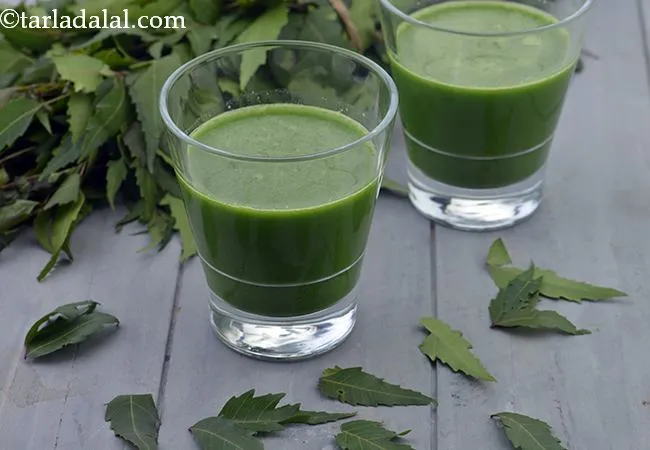
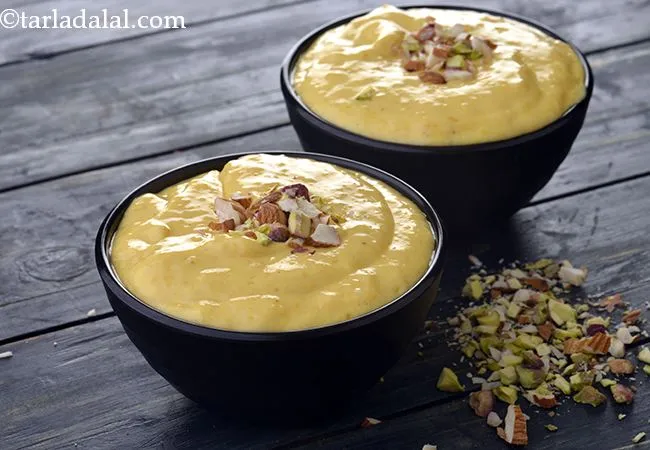
.webp)
